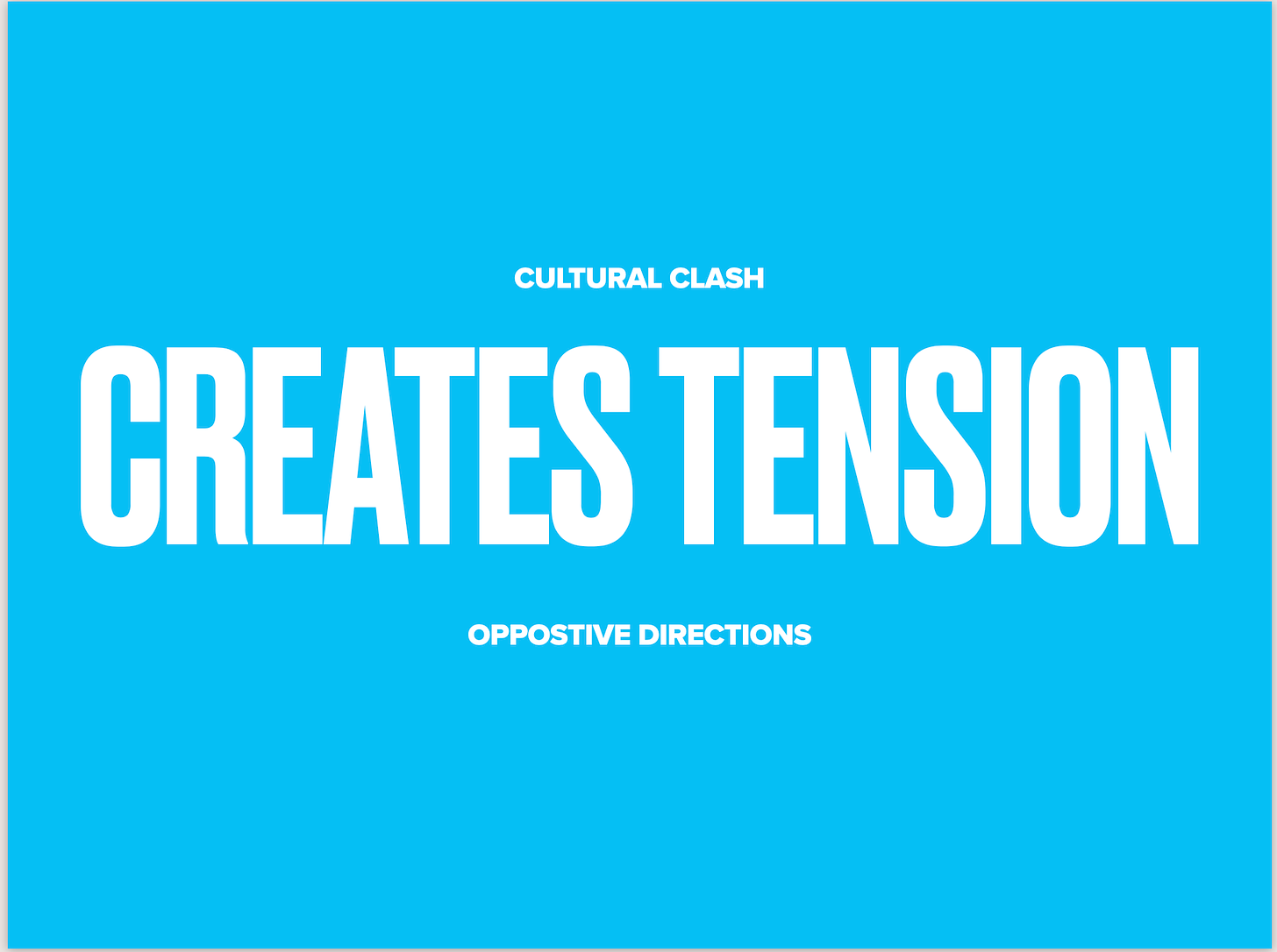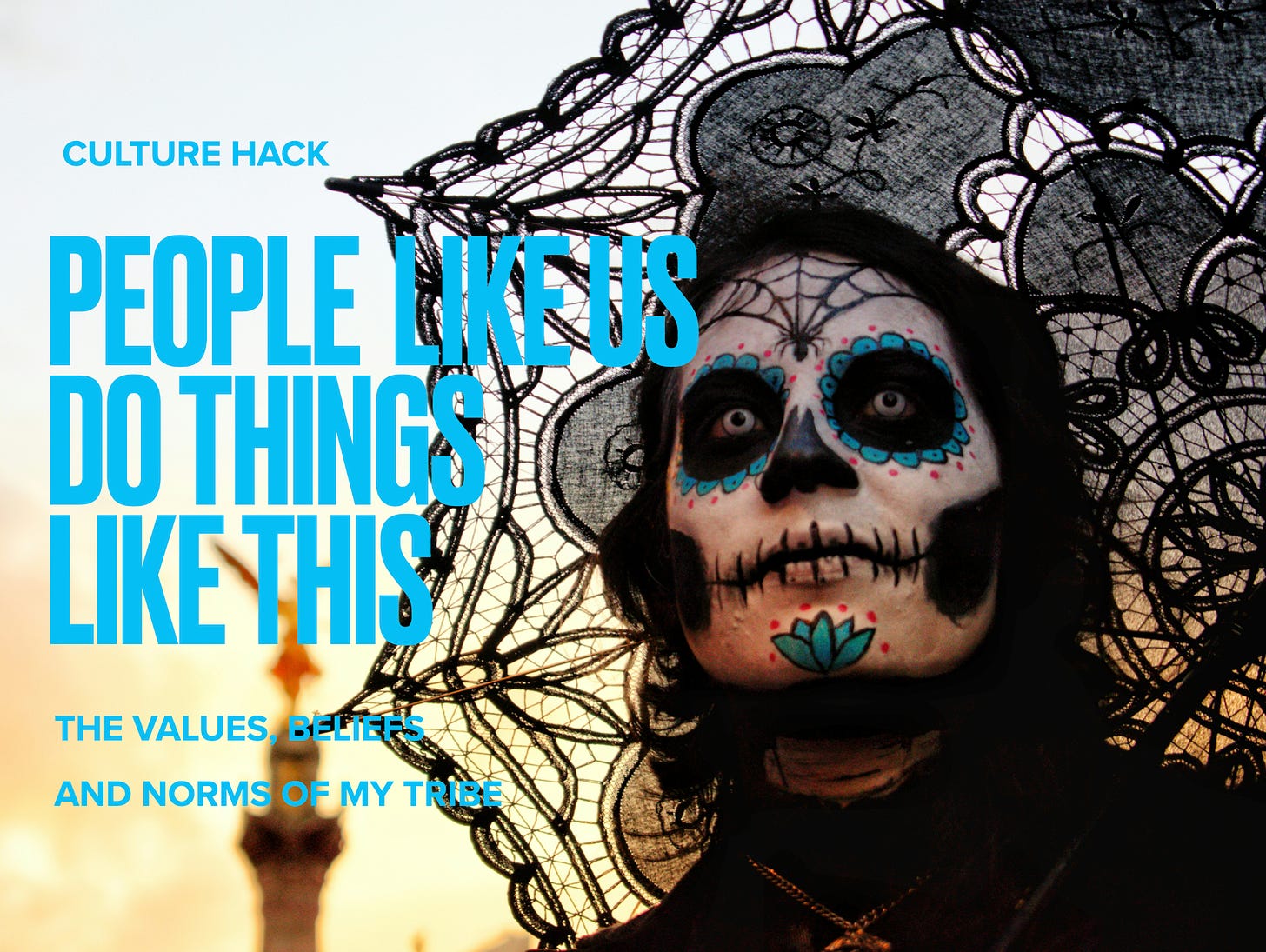Beyond Words: Turn Cultural Tension into Team Collaboration
How Simple Visualization Techniques Bridge Cultural Differences and Drive Collaboration
This week, as I prepared a presentation on creating inclusive environments for the Latino community in the U.S., I found myself thinking about visualization tools and sticky notes. Strange as it may seem, sticky notes can work wonders in bridging cultural divides and helping us rethink our assumptions.
Let me show you why.
The Latino Experience: Worlds Colliding
Picture this: you've packed your bags to pursue a better life in a new country, one where your worldview is practically flipped upside down from your own.
Now add the language barrier — maybe you don’t speak the language yet, or you struggle to express yourself fluently if you do. It can feel like a cosmic clash, like Jupiter and Uranus colliding, creating tension at every turn.
For many first-generation Latinos from Central and South America making a home in the U.S., this cultural clash generates a unique kind of tension — a pull in two opposite directions.
Here is the thing: The same can happen when working with diverse cross-cultural teams.
And often, we don’t understand why this tension exists.
Cultural Tension: Fear of the Unknown
These cultural tensions can lead to a fear of uncertainty, ultimately causing disengagement or even paralysis in certain situations. Why does this happen?
To explore that, let's ask ourselves: what exactly is culture?
Culture in a Nutshell
I love Seth Godin’s definition of culture: People like us do things like this.
The things we do are deeply influenced by how we see the world — our values, our beliefs, and our shared experiences.
Just think about it: in Peru, people drink beer in a cold glass; in Mexico, it's straight from the bottle. In Texas, a true cowboy rides a horse; a serious biker rides a Harley.
It’s simple: People like us do things like this.
But there’s more to culture than these quirks.
According to cultural psychologist Geert Hofstede, two dimensions drive much of our behavior: Individualism and Collectivism.
These two perspectives shape the way we act, connect, and communicate with each other.
Individualism vs. Collectivism: A Breakdown
The Individualism vs. Collectivism dimension captures how societies value individual achievement over group cohesion. Let’s examine these core differences.
Self-Identity
Individualistic Cultures: The “I” is valued over the “we.” People see themselves as independent, prioritizing personal achievements.
Collectivist Culture: The “we” takes precedence over the “I.” Individuals identify closely with their group — whether family, community, or workplace — and loyalty to the group is paramount.
Decision-Making
Individualistic Cultures: Decisions are often made independently, focusing on personal goals and benefits.
Collectivist Cultures: Choices are made through group consensus, with an eye on the well-being of family and community members.
Communication Style
Individualistic Cultures: Communication is direct and clear, prioritizing assertiveness and personal expression.
Collectivist Cultures: Communication is indirect and context-sensitive, aiming to maintain harmony and avoid conflict within the group.
Relationships and Loyalty
Individualistic Cultures: Relationships are flexible, and people often change social connections as personal preferences evolve.
Collectivist Cultures: Relationships are deep and enduring, with strong loyalty to family, friends, and community, often requiring personal sacrifices.
Workplace Dynamics
Individualistic Cultures: Success is linked to individual performance, with rewards based on personal accomplishments.
Collectivist Cultures: Success is seen as a group effort, with shared rewards that promote harmony and collective achievement.
Individualistic and Collectivist Countries
Individualistic Countries: These are often Western nations that prioritize personal freedom and autonomy. Examples include:
United States
United Kingdom
Australia
Canada
Netherlands
Germany
France
Collectivist Countries: Typically found in Asia, Latin America, and Africa, these cultures value group harmony and loyalty. Examples include:
China
Japan
South Korea
India
Indonesia
Mexico
Brazil
Bridging the Gap with Visualization and Sticky Notes
How do visualization and sticky notes come into play here?
We level the playing field when we use these tools in workshops or meetings. Visualizing ideas with sticky notes gives everyone a voice and fosters a more inclusive and engaged environment, regardless of background or cultural outlook.
Sticky notes allow us to collectively reframe how we approach communication, behavior, and collaboration.
The Power of Sticky Notes in Inclusive Design
Using sticky notes will enable participants to:
See ideas clearly and understand different perspectives
Participate equally, reducing the impact of language barriers
Build a shared understanding of goals and action steps
In essence, sticky notes provide a space where cultural clashes transform into cohesion.
When we visualize ideas, we look at things through a new lens, creating an atmosphere where everyone’s voice can be heard.
So, next time you prepare for a culturally diverse meeting, consider adding visualization tools like sticky notes to your toolkit.
Doing so will foster an environment where every voice is seen, heard, and valued — turning potential cultural clashes into opportunities for connection and collaboration.





